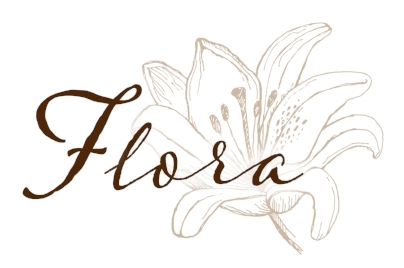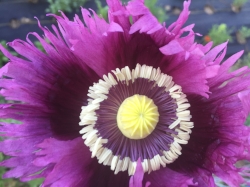Planning Your Flower Seed Sowing Calendar
Planting With the Moon
This would more accurately be titled, ‘Planting With The Cosmos’, but I don’t want to scare anyone off. Gardeners and subsistence farmers throughout the world rely on the phases of the moon to direct their planting, and so do I. Generally speaking, it’s best to plant with the new moon, and harvest with the full moon. That is because as the new moon grows towards full, it exhibits an upward pull on the plant. Conversely, it doesn’t make sense to plant with the full moon as it moves towards the new, because those upward forces are receding. The moon is growing dark and this isn’t conducive to new growth. Now, biodynamic farming has taken this concept a few steps further by acknowledging that the stars and planets in our solar system, not just the moon, also impact how plants grow on Earth. I like to use a biodynamic planting calendar like Stella Natura, and plant root crops when the moon is in an earth sign (Capricorn, Taurus, Virgo), leaf crops when the moon is in a water sign (Pisces, Cancer, Scorpio), flower crops when the moon is in an air sign (Aquarius, Gemini,Libra) and fruit crops when the moon is in a fire sign (Aries, Leo, Saggitarius). It sounds more complicated than it needs to be; utilizing a biodynamic calendar makes it easy.
January
· 1/19: Poppy (direct seeding)
1/29: Rudbeckia
· 1/29: Foxglove
· 1/29: Snapdragon (1st succession)
· 1/29: Bells of Ireland
· 1/29: Delphinium
· 1/29: Stock
· 1/29: Carnation
· 1/29: Calendula (1st succession)
· 1/29: Geum
March
· 3/15 Statice
· 3/15 Chinese Forget-Me-Not (2nd succession)
· 3/15 Orlaya
· 3/15 Atriplex (2nd succession)
· 3/15 Ammi (2nd succession)
· 3/15 Bupleurum (2nd succession)
· 3/15 Scabiosa
· 3/15 Yarrow
· 3/15 Statice
· 3/15 Pansies
· 3/15 Dill
· 3/15 Phlox
· 3/15 German Statice
April
· 4/2 Russian Statice
· 4/2 Strawflower
· 4/2 Gomphrena
· 4/2 Oregano
· 4/2 Dill
· 4/2 Ammi
· 4/2 Monarda
· 4/2 Phlox
· 4/2 Dahlias (started early in pots)
· 4/2 Basil (high tunnel)
· 4/2 Asters
· 4/2 Sunflowers (early succession under cover)
· 4/2 Cosmos
· 4/2 Amaranth (early succession under cover)
· 4/2 Zinnias
· 4/2 Frosted Explosion Grass
· 4/2 Statice
· 4/2 Celosia
Choosing the right time to sow seeds during the planting season can mean the difference between success and failure in growing flowers from seed. Some plants are, undeniably, more difficult than others to germinate-- they might require pre-treatment like scarification or stratification—but a lot can be achieved by following a planting calendar. When I am planning my greenhouse seeding schedule for the year, I take into account two main items: my frost-free dates and the phase of the moon and which zodiac sign the moon is passing through.
Frost-Free Days
Keep in mind, I’m in Zone 7 and your number of frost-free days might be different than mine. I generally assume June 1st as my last Spring frost date (although I’ve been moving that date up to May 15th in the last two years because our climate is changing) and I think of October 1 as my likely first Fall frost. That gives me about 18 weeks frost-free weeks. Many of my perennial flowers can be seeded 8-12 weeks before my last Spring frost. There are also several annuals that prefer to be transplanted out to grow in the cool months of late-Winter and early-Spring. Often these earliest sowings in January and February require that I use bottom heat for germinating them in my unheated greenhouse.
Then, I have my annuals and perennials that I think of as my mid-Spring group. I sow them about 4-8 weeks before my last Spring frost. These include perennials that grow well in the high heat of summer and annuals that are a little slower growing.
Lastly, I have my tender annuals that can’t be planted out until all danger of frost has passed, and these are plants like amaranth, zinnias, cosmos, and sunflowers that grow rapidly. These varieties are ones that I plant 2-4 weeks before my last Spring frost.
A Page from the Stella Natura Biodynamic Planting Calendar
I decided many years ago that I’ll take all of the help that I can get with gardening. I like to ask other farmers and gardeners in my area what works for them. I also lean into folk wisdom about working with plants. There is so much that I can’t see that I know my plants need to thrive (e.g. minerals, microbial life) that I try to use all of the tools and allies at my disposal to have success in the garden.
I offer the following planting dates as a rough outline for when you might consider sowing similar flowers.
Februay
· 2/6: Wheat
· 2/6: Kamut
· 2/16: Sweet Pea
· 2/16: Bupleurum
· 2/16: Orlaya
· 2/16: Chinese Forget-Me-Not
· 2/16: Feverfew
· 2/16: Bachelor Button
· 2/16: Larkspur
· 2/16: Ammi
· 2/16: Atriplex
· 2/16: Nigella
· 2/16: Cerinth
· 2/16: Lupine
· 2/16: Helenium
· 2/16: Dusty Miller
· 2/16: Veronica
· 2/16: Echinacea
· 2/16: Eryngium
· 2/16: Stock
· 2/16: Carnation
· 2/16: Bells of Ireland
· 2/26: Calendula (2nd succession)
· 2/26: Snapdragon (2nd succession)
May
· 5/1 Ammi
· 5/1 Shiso
· 5/1 Atriplex
· 5/1 Coreopsis
· 5/1 Sunflowers
· 5/1 Cosmos
· 5/1 Amaranth
· 5/1 Zinnias
· 5/1 Asters
· 5/1 Broom Corn
· 5/1 Milo
· 5/1 Millet
· 5/1 Basil
· 5/1 Gomphrena
· 5/1 Celosia
I hope that this planting calendar is a helpful resource as you begin to plant this Winter and Spring. Of course, the deepest know-how is found through intuition and the insights gained through experience over time. May you enjoy the journey!






